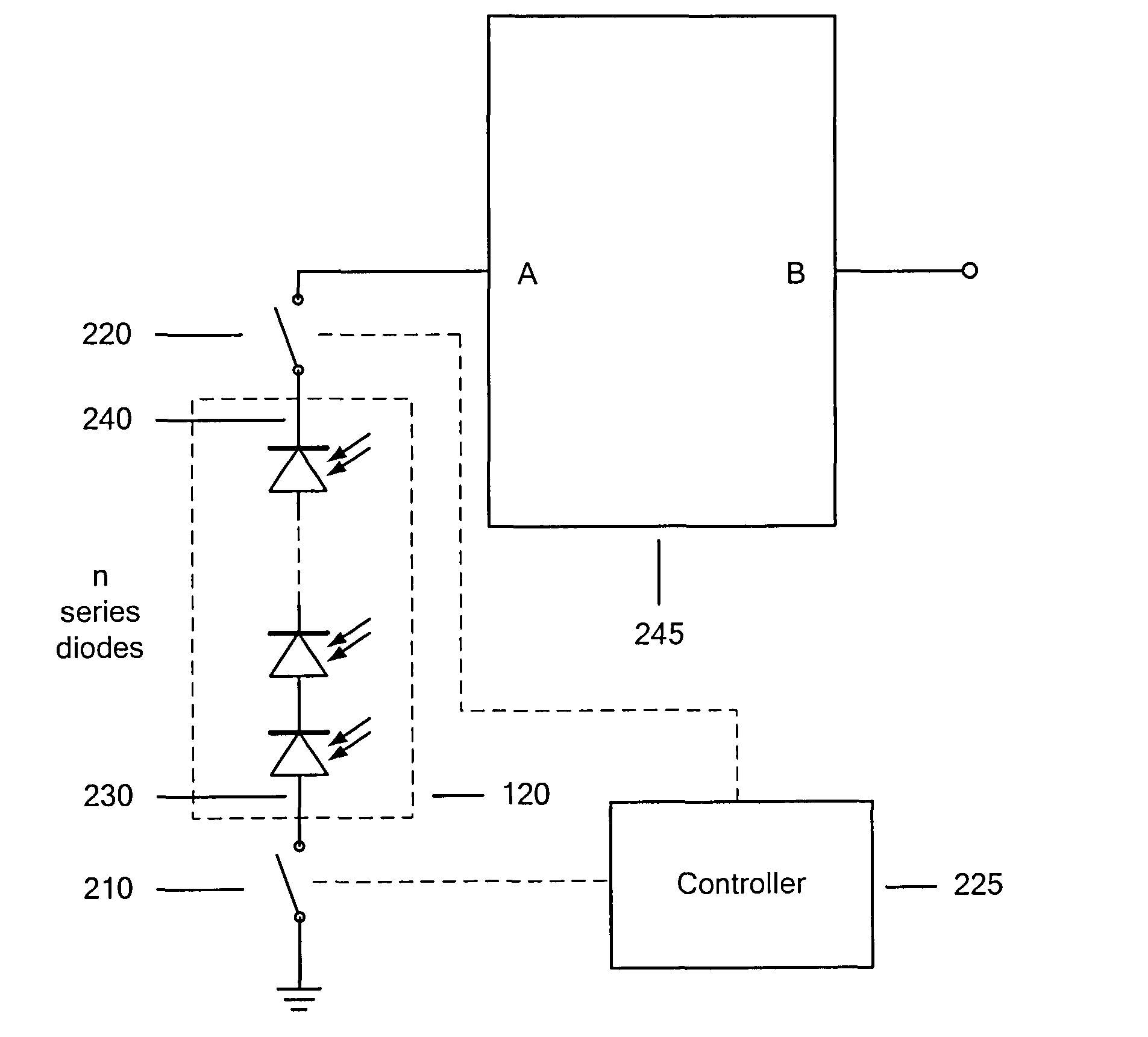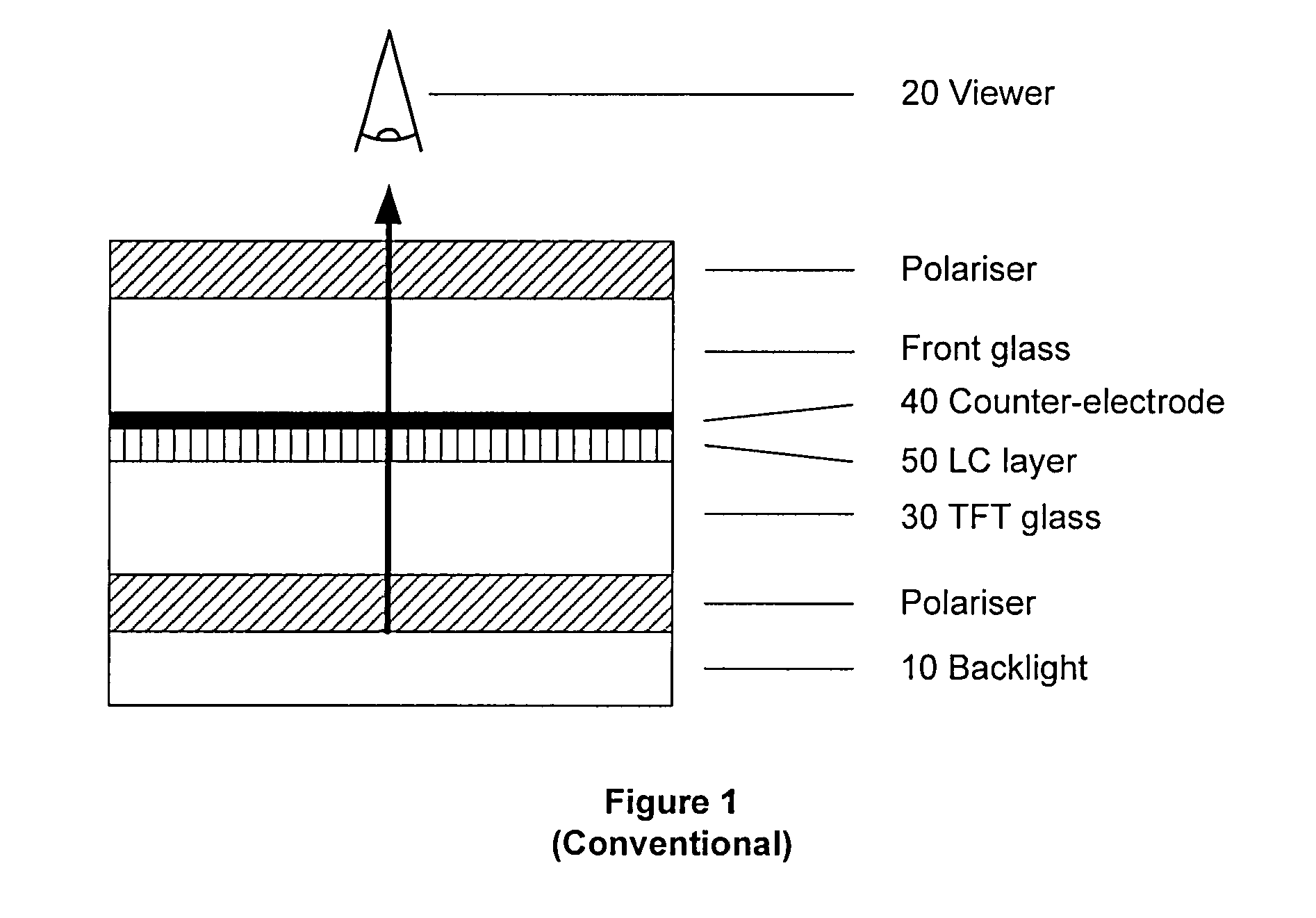Apparatus and method for preventing charge pumping in series connected diode stacks
a series connected diode and charge pumping technology, applied in the field of light sensor circuits, can solve the problems of affecting the operation of ambient light sensors, affecting the accuracy of voltage control, and difficult to achieve precision voltage control in practice, so as to reduce forward bias voltage and suppress charge pumping
- Summary
- Abstract
- Description
- Claims
- Application Information
AI Technical Summary
Benefits of technology
Problems solved by technology
Method used
Image
Examples
first embodiment
[0078]A device in accordance with the invention is shown in FIGS. 12 and 13, and finds use in situations where no conductive shield layer is present above the diode stack. FIG. 12 is a schematic diagram showing a stack 120 of at least two series connected photodiodes, arranged such that the cathode of one is connected to the anode of the next. The end-most anode 230 is connected to one terminal of a simple two terminal switch 210, the other terminal of this switch being connected to ground. The end-most cathode 240 is connected to one terminal of a second two terminal switch 220, the other end of this switch being connected to terminal ‘A’ of bias and current measurement circuitry 245. This bias generating and current measurement circuitry 245 is embodied in the form of an integrator 70 as shown in FIG. 3, and described in WO2008 / 044749A1. The switches 210 and 220 are controlled via a controller 225, which commands the switches to open and close using known techniques. Although not ...
second embodiment
[0080]FIGS. 12 and 15 show a device in accordance with the invention, whereby the switches 210 and 220 are operated as shown in FIG. 15. The switches close only when the counter-electrode voltage is static, as was shown in FIG. 13. However, in FIG. 15 the switches close once every second low pulse or once every second high pulse of the counter-electrode waveform, rather than once every period. This may be advantageous, as it reduces the rate at which the switches are being operated and hence reduces the frequency of noise which couples from the switch signals themselves to other parts of the circuitry (such as to the bias generation and current measurement circuitry 245).
third embodiment
[0081]FIGS. 12 and 16 show a device in accordance with a third and preferred embodiment of the invention, whereby switches 210 and 220 are operated in the manner shown in FIG. 16. The third embodiment is used when a shield layer 180 is present above the diode stack 120. FIG. 16 shows that the switches are closed following each transition of the counter-electrode voltage and once the voltage upon the conductive shield layer has settled. A short delay is utilized between each transition ending and the switches being closed, allowing time for transient voltages within the diode stack to decay to levels which will not produce a significant charge pumping current. On each occasion the switches are opened before a new transition of the counter-electrode voltage occurs, as this will be accompanied by transient voltages within the stack. This embodiment is preferred because the switches may be opened more frequently than other embodiments. This is beneficial when the diode stack current mus...
PUM
 Login to View More
Login to View More Abstract
Description
Claims
Application Information
 Login to View More
Login to View More - R&D
- Intellectual Property
- Life Sciences
- Materials
- Tech Scout
- Unparalleled Data Quality
- Higher Quality Content
- 60% Fewer Hallucinations
Browse by: Latest US Patents, China's latest patents, Technical Efficacy Thesaurus, Application Domain, Technology Topic, Popular Technical Reports.
© 2025 PatSnap. All rights reserved.Legal|Privacy policy|Modern Slavery Act Transparency Statement|Sitemap|About US| Contact US: help@patsnap.com



